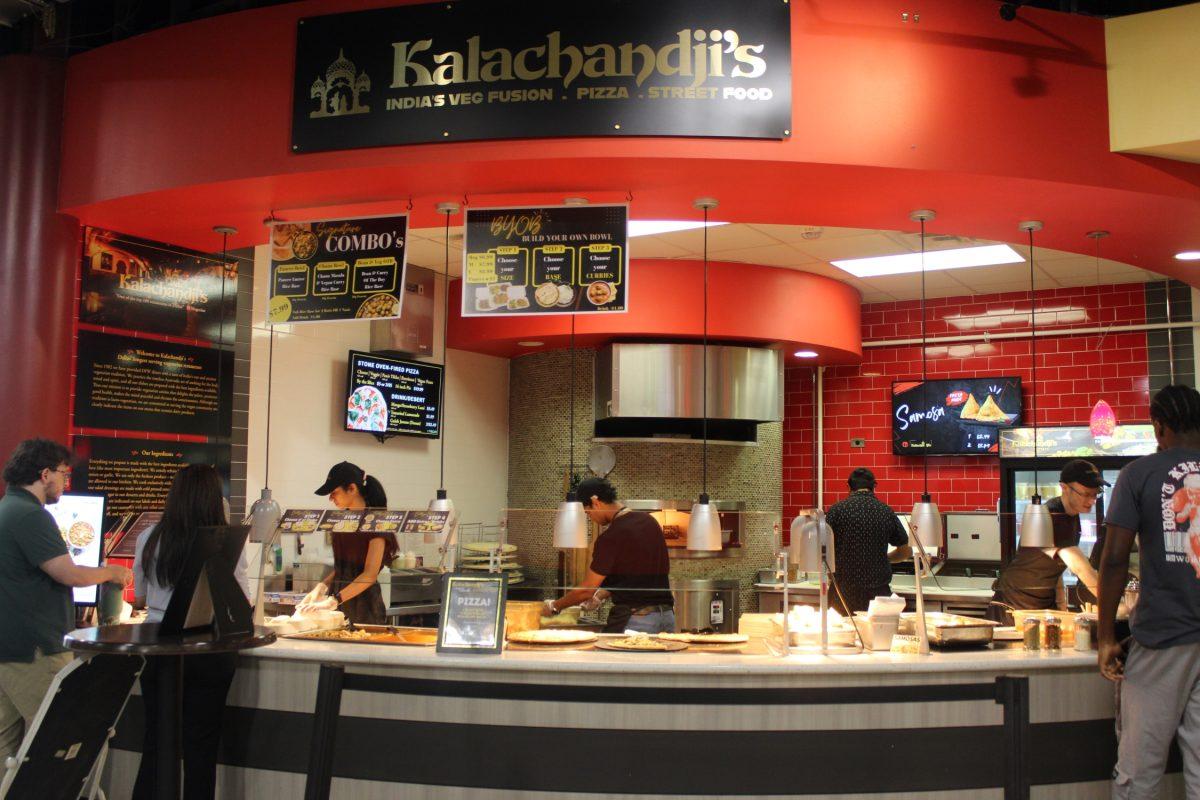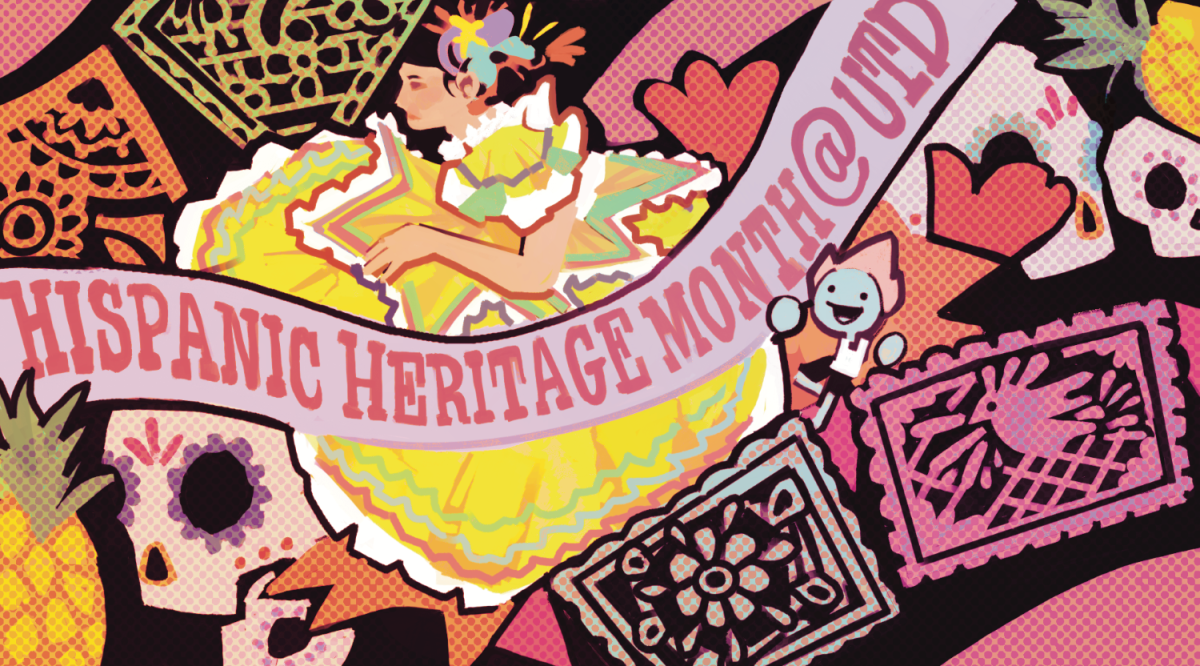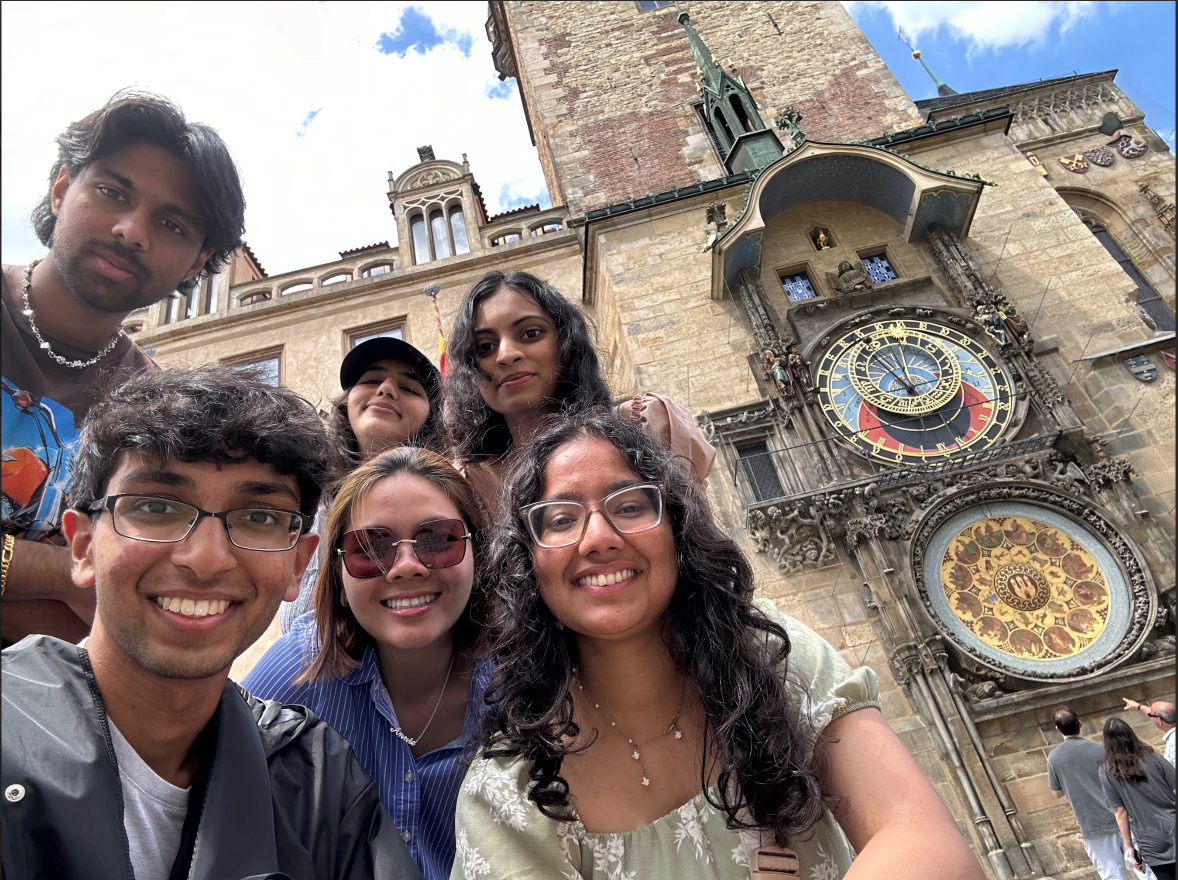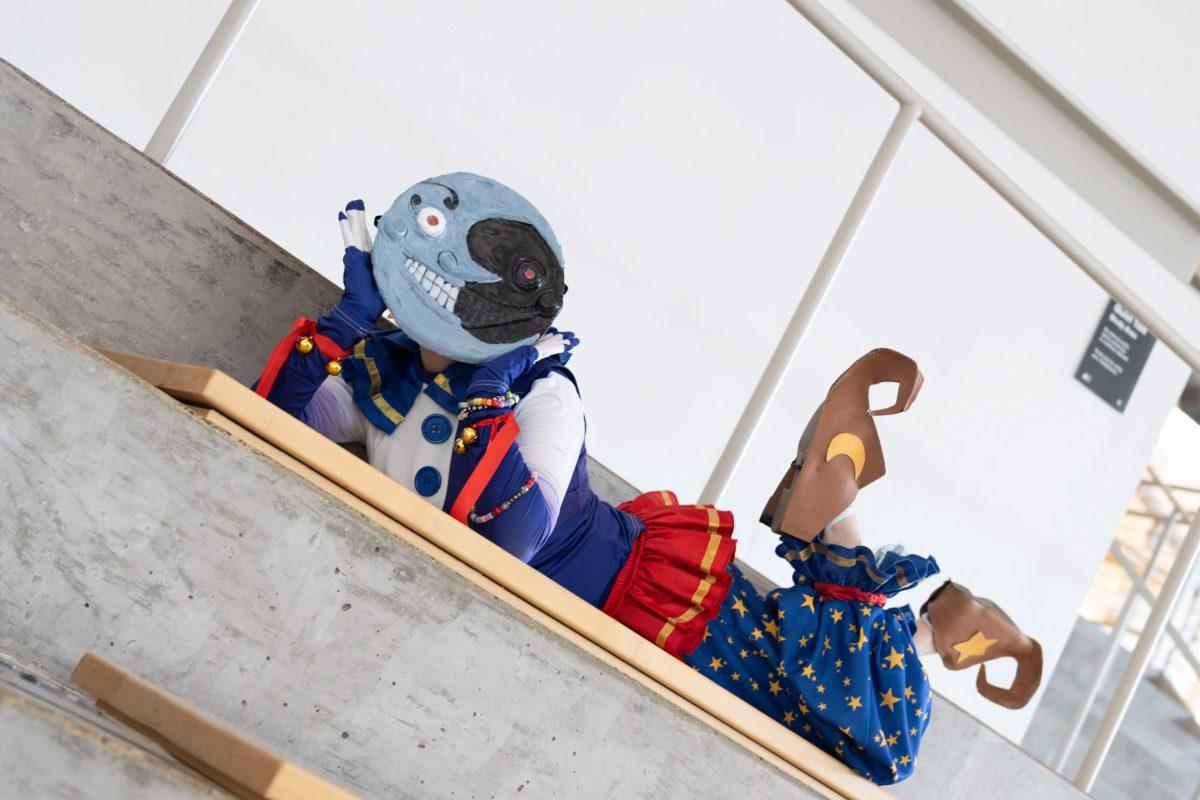Paola Martinez | Life & Arts Editor
When two UTD alumni and a few Dallas-area volunteers packed an Indian buffet restaurant into the back of a pickup truck to start selling lunches on UTD’s campus, they did not expect to garner booming interest — or ultimately, for those alumni to turn the to-go box meals into a Student Union dining staple. Designed as an accessible vegetarian option that gives Indian students a familiar taste of home, Kalachandji’s rings in twenty years of providing meals at UTD.
While Kalachandji’s’ physical location at the SU opened in March 2022, the original restaurant, Kalachandji’s Restaurant and Palace, located in East Dallas, has operated for over 40 years. Jeff Collins, manager of the UTD Kalachandji’s location, said the original Kalachandji’s is the city’s first vegetarian Indian buffet restaurant specializing in catering, which takes food to shelters, hospitals and universities as part of its outreach program. All the food is prepared at the Hare Krishna temple located inside the original location before being brought to UTD, Collins said.
“[Kalachandji’s] is considerably different,” Collins said. “The other dining options here are all corporates, so this is really the only local option … The way I like to phrase it is basically Indian mothers and grandmothers are making this food and you [get to] eat it on campus.”
Kalachandji’s started providing meals at UTD in 2004 through the Mantra Lounge, a mediation and yoga program for students that offers free food. Raj Das, a 1999 UTD alum and co-founder of the restaurant’s SU location, said students were pleased to have vegetarian options on campus.
“We had boxes about the size of [a to-go box] … [that we] used to cook in the morning,” Das said. “We had a few volunteers at that point of time that were helping with the cooking and [bringing] those on campus. And from the back of my truck, students just stopped by, and they just come and pick [their food] and go.”
Das said the next step for Kalachandji’s was to make their operation at UTD more official than a truck bed. In 2014, the Krishna Lunch initiative began, offering UTD students $5 vegetarian lunch boxes containing two curries and rice. Students pre-ordered their boxes and picked them up at lunch time in the Student Services Building.
The Krishna Lunch program brought on a good following, Das said, bringing in staff and students alike. Seeing how popular the lunch boxes were, Das said that UTD felt Kalachandji’s could now be incorporated into their dining services. Nick Norris, the retail dining director at the time, offered Das and 2011 alum Hemangi Bhatt the space they now occupy in SU.
“There are many of us who are behind the scenes,” Bhatt said. “I remember the first year — mainly first year summer, we were spending lot of time here before the fall [semester] was going to begin. We were all very excited … And since this is not something that we were doing for the first time, the restaurant already exists, so we had a lot of experienced people to help us and guide us to put this up.”
Kalachandji’s offers students a rotating buffet with two permanent dishes: the paneer — an Indian cottage cheese — rice bowl and the chana masala — chickpea and veggie — rice bowl. It also offers pizzas by the slice or whole, with its most famous offerings being the paneer tikka, Indian street food like samosas and drinks like mango and strawberry lassis.
“Anybody can come up and ask for a sample of something we have,” Collins said. “We also send people out with sampling cups to kind of survey the area and see if anybody wants to try something. We have plenty of people who’ve never tried Indian food before or are averse to vegetarian. They think meat is required for a meal, [but] we’ve surprised a lot of people by how filling it can be, how much protein it has, how affordable it is.”
A bowl of curry and rice starts at $6.99. A samosa with a side of chutney sauce is $2.99 and the mango and strawberry lassis are $3.49 each. Collins said the most expensive thing on the menu is $10.50, which he says is the starting price point of most other meals sold in UTD’s food court.
“They don’t make this food for profit,” Collins said. “Our main goal [is] supplying people with energy that they need for their lives.”
Bhatt said that Kalachandji’s’ food helps students feel more connected to their homes even if they are far away. She said she hopes the food can help them feel less homesick in the same way that having food from her home country, India, in the U.S. made Bhatt herself feel more at home.
“We knew that food is a blessing, and so I received it as a blessing, and I wanted to pass it on with it as a blessing,” Bhatt said.
Das and Bhatt said they do not want Kalachandji’s to become a corporatized chain restaurant and instead stay true to its roots, but that they believe the model they are currently using at UTD could be applied to other universities like UT Arlington.
“That’s what really drives me … whenever I go to shelters or when I go to hospitals, after a long day, when [the people there] have a simple, hot, good, fresh meal, [it] brings them back to life,” Das said. “And I see the same thing with students.”







